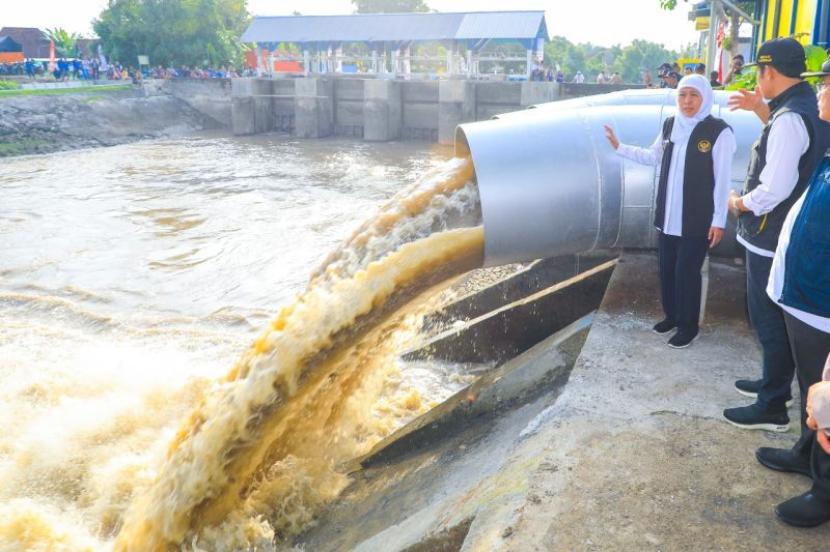REPUBLIKA.CO.ID, JAKARTA -- Senior economic researcher Deni Friawan of the Centre for Strategic and International Studies (CSIS) revealed the government's development of water resources infrastructure helped improve the agricultural sector.
“If now there are improvements from water resource infrastructure developments, then there is a positive side considering that some villages are building farms such as villages in Central Java, villages in Mojokerto, East Java, agricultural tourist villages so there are good things,” said Deni in Jakarta, Monday (22/1/2024).
Thus, he added, there is an improvement in water resource infrastructure through the construction of dams, irrigation rehabilitation, improvement of water resource infrastructure.
CSIS researchers suggest that governments build more water infrastructure in areas that are not yet available while aligning with the four pillars of agriculture.
The four pillars of agriculture consist of seeds, fertilizers, agricultural management and tillage as well as marketing management of agricultural products.
If only one pillar is missing or not fulfilled, the agricultural sector can experience problems. So the four pillars of agriculture must be met.
“Farmers must be self-sufficient in these four pillars, the way is to carry out agricultural integration where there must be a link between agriculture and livestock in order to reduce production costs by using fertilizers processed from farmed animal manure. This type of fertilizer treated from animal manure is good for agricultural crops. As for the animal feed, it comes from unsold agricultural crop products,” Deni said.
Regarding the sale of agricultural crop products, it is also better to rely on a double cropping system or multiple cropping than a single cropping system, so that if one crop fails to harvest then there are still others. Thus, the price of agricultural products becomes relatively stable through market mechanisms naturally.
On the island of Java itself, land for agricultural production is increasingly limited so it is necessary to carry out agricultural intensification where farmers optimize the limited land by diversifying the cultivation of agricultural products as well as livestock for daily, monthly and annual income as their investment.
So the combination is for agricultural intensification in Java Island which has limited agricultural production land.
“The important thing to remember is that we don't need to produce all agricultural products ourselves,” Deni said.
If the amount of human resources (HR) owned is small and productivity is small, then the remaining human resources are better allocated to industrial or service sectors that generate greater income.
As long as society has purchasing power, consumption for consumption of an agricultural product does not have to be from within the country.
“Because in the agricultural sector it is impossible not to import. If we ban imports, the price of products becomes expensive not only in cities but also in villages, because the village people themselves are net consumers. I mean that both imports and domestic agricultural products should be balanced,” Deni said.
For information, the government through the Ministry of Public Works and Public Housing (PUPR) has built 61 dams in the last 10 years.
In the future, the development can continue by building 50 new dams every 5 years.
This is because Indonesia needs many more water reservoirs to deal with extreme weather and climate change, so there is no other option to cope with floods and droughts, except by adding more dams and dams.


